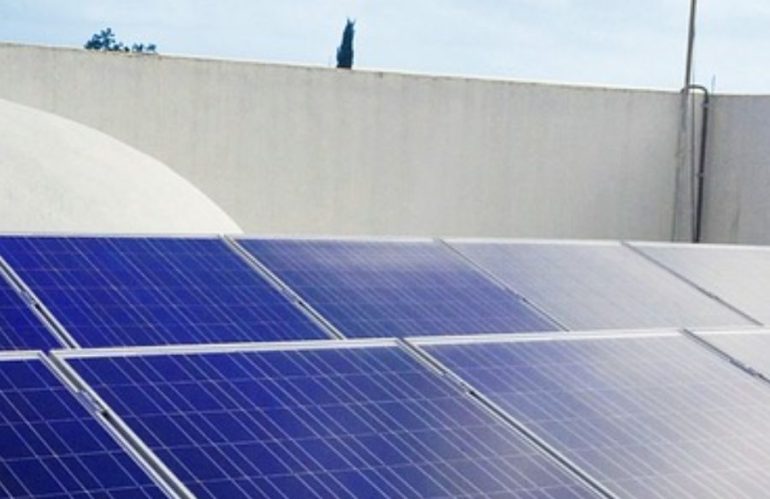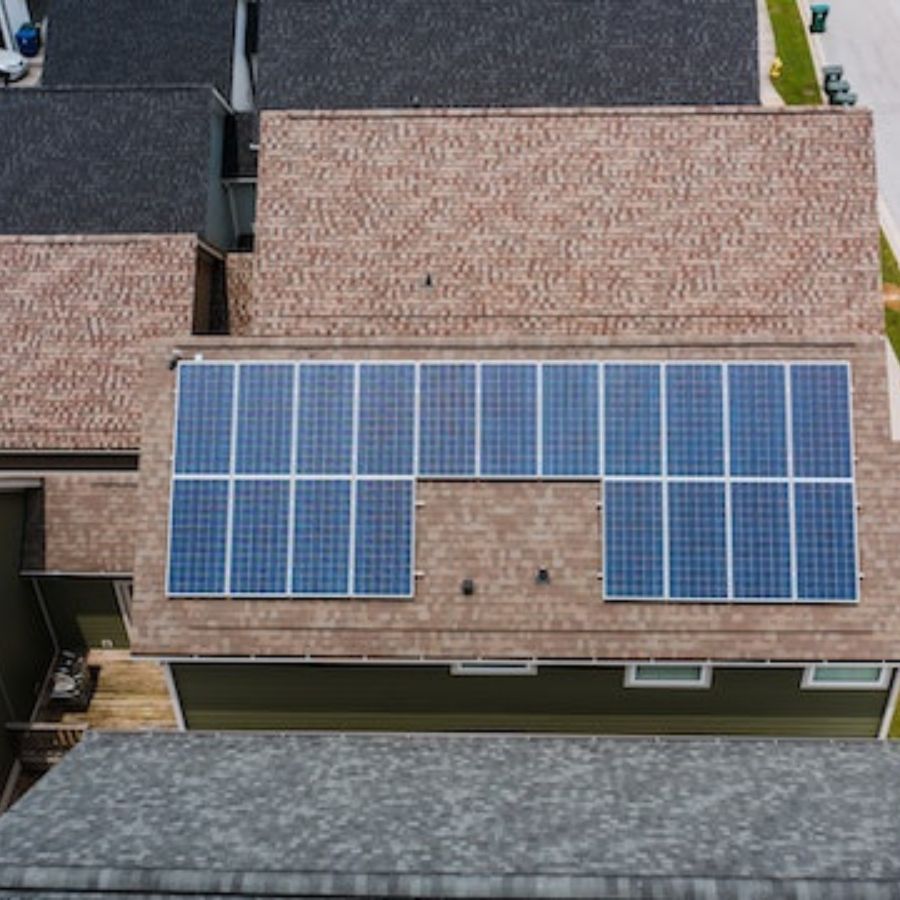As we increasingly depend on the sun to power our homes, businesses, and more, grasping the nuances of solar panels, particularly nuances like their maximum voltage, becomes indispensable. Generally speaking, the maximum voltage of a solar panel ranges between 18V to 36V. However, let us discover why this is important and how you can calculate the voltage of your solar panels.
At its core, voltage is the electric potential difference between two distinct points within an electrical system. When translating this to a solar system, voltage quantifies the electric energy a solar panel can provide. The energy goes to the devices it powers or the grid it connects to. Again, the term maximum voltage pertains to the peak voltage achievable by a panel under optimal conditions. It is a value often higher than the typical operating voltage.
Solar Cell vs. Solar Panel
It’s not uncommon for individuals to mistakenly use solar cells and solar panels interchangeably. A solar cell is a singular, compact unit that can convert sunlight directly into electricity. When one wonders “how many solar panels” are required for a particular application, they’re essentially inquiring about the number of assemblies of these individual cells.
In contrast, a solar panel is an assembly of numerous solar cells linked together. One amplifies the collective maximum power output by connecting these cells in a solar panel array. Moreover, it elevates the overall efficiency and achieves a higher maximum system voltage.
Factors Affecting the Voltage of a Solar Panel
Temperature
The relationship between a solar panel’s temperature and voltage output is intricate yet vital. Each has a specific solar panel temperature coefficient, which provides a metric indicating the variation in the panel’s performance for every degree of temperature change.
Commonly, as temperatures soar, the maximum open circuit voltage (or simply open circuit voltage) experiences a decline.
Besides, this phenomenon is primarily because, at higher temperatures, the energy required to knock an electron loose inside the panel decreases. It leads to a lower open-circuit voltage.
Irradiance
Sunlight intensity, termed irradiance, influences the maximum power voltage a solar panel can yield.
It’s straightforward: brighter, direct sunlight enables a solar panel to produce electricity more efficiently, culminating in higher voltage output.
The panel’s voltage may reduce during overcast days with lower irradiance on the flip side.
Age of the Panel
Nothing escapes the ravages of time, and solar panels are no exception. As these panels soldier through years of exposure to the elements, their inherent efficiency tends to wane, impacting their maximum power voltage.
Again, the degradation over the years can sometimes be significant. It prompts homeowners or businesses to consider updating their panels to ensure the maximum power output remains optimal.
Type of Solar Cell
The choice of solar cells incorporated within a panel significantly impacts its voltage attributes. Common categories like monocrystalline, polycrystalline, and thin film present their efficiencies and characteristics.
Each category boasts its distinct maximum power point tracking mechanisms and, as a result, a unique maximum power point. These variances directly affect the potential maximum voltage of the panel.
A holistic approach is necessary to harness the maximum power potential of any solar system. It includes determining how many solar panels are required and deeply understanding these multifaceted factors that mold their voltage outputs.
As we proceed, we’ll explore the intricate dance of this max voltage with other components of the solar panels’ system. In addition, we will delve into the pivotal role of managing this voltage for an efficient, sustainable energy solution.
Voltage Classifications in Solar Panels
Solar energy is replete with technical terms, each pointing to specific characteristics and efficiencies of a solar panel.
Two of the most significant terms about the voltage of solar panels are Open-Circuit Voltage (Voc) and Max Power Point Voltage (Vmpp or Vmp).
Open-Circuit Voltage (Voc)
The open circuit voltage (Voc) is the voltage exhibited by a solar panel when it is not connected to any load, meaning no current flows through it. Simply put, it’s the maximum system voltage a solar panel produces under full sunlight without being connected to a circuit. Besides, this voltage is crucial as it offers a benchmark of the panel’s maximum system voltage capability under ideal conditions.
Maximum Power Point Voltage (Vmpp or Vmp)
The Vmpp or Vmp, on the other hand, is the voltage at which the solar panel produces the most power. Unlike the Voc, this voltage occurs when the panel is connected and delivers power to a load.
The solar panel produces its maximum power output at this voltage, which is essential for determining the efficiency and performance of the panel.
While both the Voc and Vmpp represent different voltage points on a solar panel, they are inherently related. The Vmpp is always lower than the VOC.
This relationship is vital because it determines the operating range of the panel. Ensuring a solar panel array operates closer to its Vmpp will optimize the power output.
Why is Maximum Voltage Important?
The maximum system voltage of solar power panels plays a pivotal role in ensuring their effective and safe operation in a variety of ways:
System Compatibility
Solar panels energy systems encompass more than just panels. Components like inverters need to be compatible with the solar panel voltage.
An inverter’s voltage input range must accommodate the solar panels’ maximum system voltage to ensure optimal energy conversion and system performance.
Safety Considerations
Voltage management is not merely about efficiency; it’s also about safety. An over-voltage situation can strain the system components, risking damage to the equipment and even posing potential safety hazards.
Understanding and managing solar panel voltage can avert such situations.
Performance and Efficiency
Voltage plays a pivotal role in determining the power output of a panel.
By managing the voltage close to its Vmpp, the solar power panels can operate at their peak efficiency, maximizing the solar panels’ power harnessed.
How to Measure the Maximum Voltage of a Solar Panel?
Determining the maximum system voltage of your solar panel can be approached in various ways:
Using a Multimeter
1. Ensure the exposure of the solar panel to sunlight.
2. Set the multimeter to the Direct Current (DC) voltage setting.
3. Connect the positive (red) lead of the multimeter to the positive terminal of the panel and the negative (black) lead to the negative terminal.
4. The reading displayed is the open circuit voltage of the solar panel.
Referring to Manufacturer Specifications
It’s always wise to consult the datasheet provided by the manufacturer.
These sheets are exhaustive sources of information and will provide precise values for both Voc and Vmpp, allowing for accurate system planning and component compatibility checks.
Using Monitoring Systems
Modern solar power setups often come equipped with sophisticated monitoring systems.
Furthermore, these systems provide real-time data on the power output and detailed insights into the operating voltages of the solar panel array.
Such systems ensure the panels operate at peak efficiency and can provide alerts if voltages approach unsafe levels.
Finally, the voltage characteristics of solar panels play a pivotal role in shaping the efficiency, safety, and compatibility of solar power systems.
Proper understanding and management of these voltages, combined with regular monitoring, can ensure the full realization of the promise of solar panels – clean, efficient, and sustainable energy.
Tips to Optimize and Manage Voltage Outputs
Understanding the maximum system voltage of a solar panel is just the first step.
Harnessing the potential of this knowledge requires optimization and effective management.
Here are some tips to ensure you get the most out of your solar system:
Proper Installation
Importance of Orientation and Angle: Its exposure to sunlight significantly determines the efficiency of a solar panel.
Ensuring the panel orients correctly, typically towards the equator, can increase sunlight capture.
Additionally, the angle of installation should match the latitude of the location to maximize sun exposure throughout the year.
Proper orientation and angling can boost voltage outputs and overall energy yield.
Regular Maintenance
– Keeping Panels Clean and Free from Obstructions: Dust, dirt, bird droppings, or fallen leaves can obstruct sunlight and reduce the efficiency of a solar panel.
Regular cleaning ensures consistent voltage outputs and that the panels operate at their optimum.
Furthermore, periodically checking for any shading from growing trees or new structures and making necessary adjustments can prevent reduced power generation.
Using MPPT Controllers
Devices Ensuring Optimal Operation: Max Power Point Tracking (MPPT) controllers are devices that can ensure the solar panel produces well and operates at its maximum power point.
By constantly monitoring the panel’s output and adjusting the load, these controllers can boost the solar system efficiency, optimizing the voltage and power outputs.
Limitations and Challenges
Like any technology, solar panels and their associated systems aren’t without their limitations and challenges:
External Factors
Environmental Issues Affecting Voltage: Factors such as cloud cover, seasonal changes, or sudden weather shifts can unpredictably affect the voltage output of a solar system.
Prolonged rainy or cloudy days can reduce energy generation, challenging the system’s consistency.
Technical Limitations
Current Tech Boundaries and Research: While solar panels have seen rapid advancements in efficiency and cost-effectiveness, there’s still a limit to how much sunlight they can convert to electricity.
Current technologies have efficiency ceilings, but ongoing research aims to overcome these limitations, with emerging technologies like perovskite solar panel cells showing promise.
Conclusion
The journey through understanding the voltage dynamics of solar panels reveals a complex interplay of factors that determine their efficiency.
From the foundational knowledge of open-circuit voltage and max power point voltage to the practical steps of optimizing these values, it’s clear that managing the maximum system voltage of a solar panel is vital.
However, the field of solar panel energy is ever-evolving in all technological domains. With constant advancements, the parameters we understand today might shift tomorrow. Therefore, it’s crucial to stay informed and continuously learn.
Embracing the nuances of current technologies and being adaptable to future changes ensures that we harness the sun’s power to its fullest, lighting up our world sustainably.
Frequently Asked Questions
Can Solar Provide 240 Volts?
Yes, solar systems can provide 240 volts.
Most residential solar installations connect to inverters that convert the direct current (DC) the solar panels produce into 240-volt alternating current (AC). It is best for home use and grid connection in many countries.
What Is the Maximum Output Voltage of a 12V Solar Panel?
The maximum output voltage of a 12V solar panel, known as the open-circuit voltage (Voc), typically ranges between 18 and 22 volts. It depends on the panel’s specifications and environmental conditions.
However, when the panel is under load and operating optimally, the voltage is typically around 12V to 18V. Always refer to the manufacturer’s specifications for precise values.


